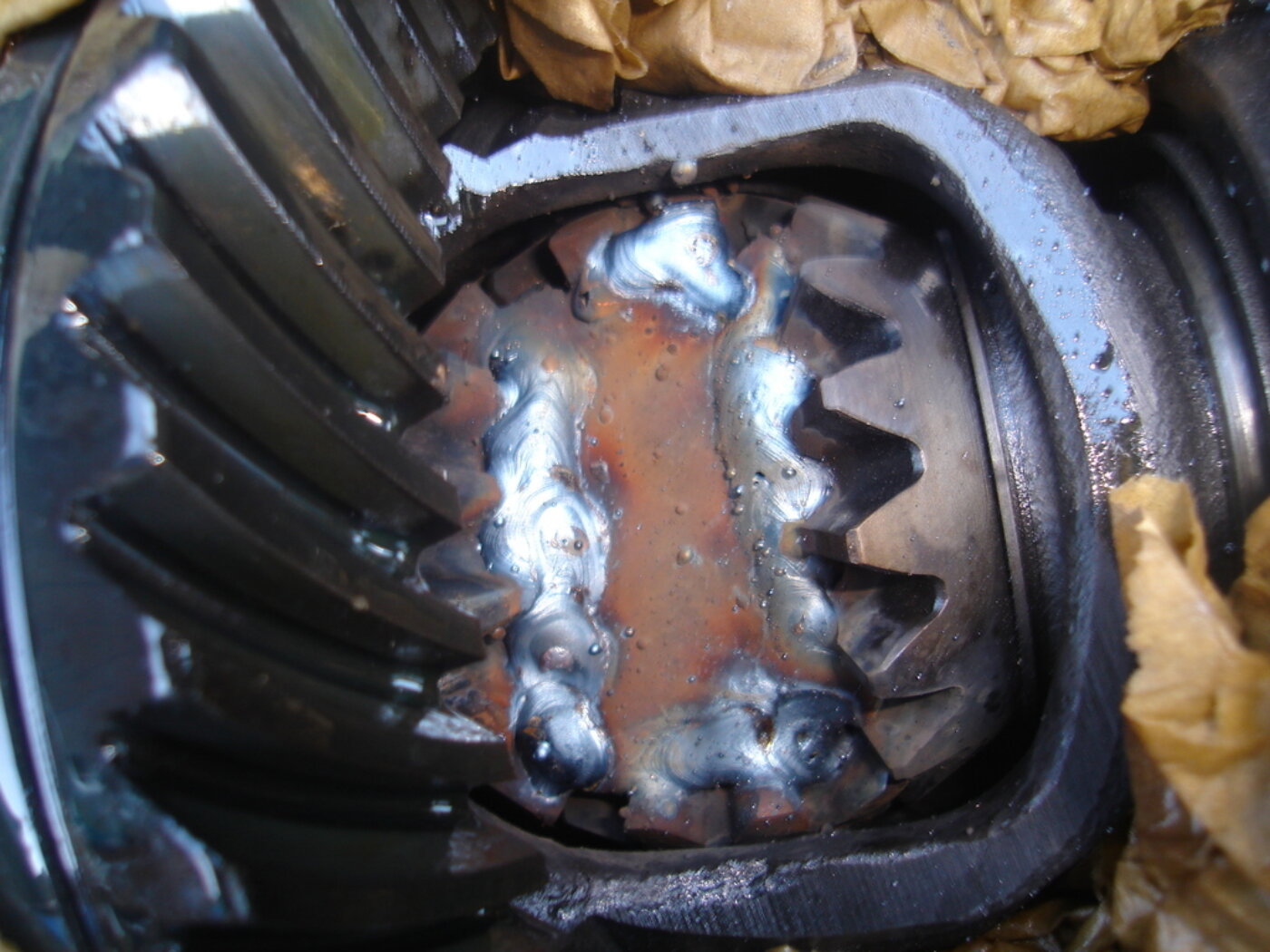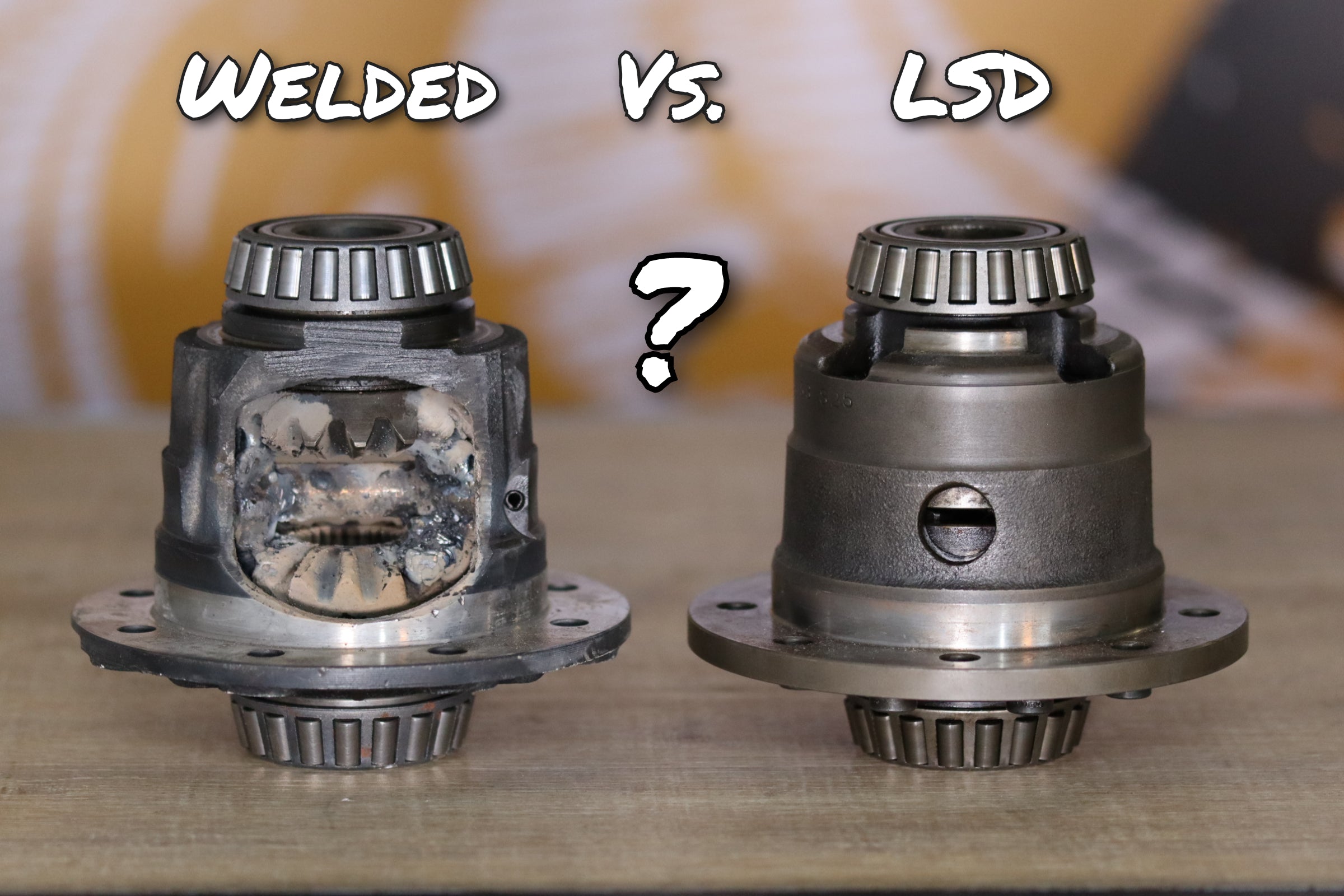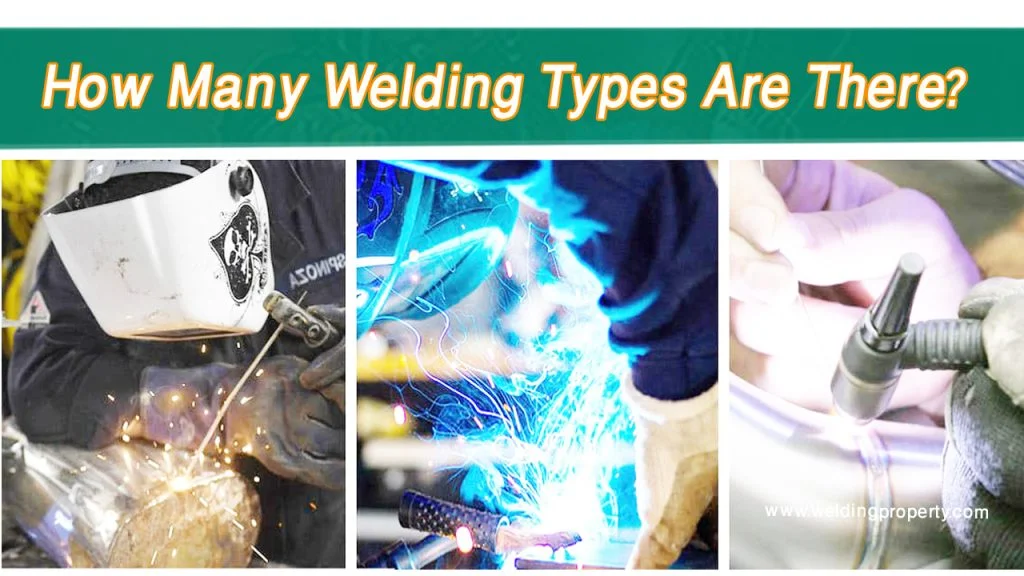Welding a differential, or “diff,” has its pros and cons. This modification can change how your vehicle performs.
Understanding the impact of welding a diff is important. It can offer better traction but may cause other issues. This blog post explores the benefits and drawbacks of welding a diff. We’ll look at how it affects your vehicle’s handling and performance.
This information will help you decide if welding a diff is right for you. Whether you’re a car enthusiast or a casual driver, this guide will provide clear insights. Let’s dive into the details and help you make an informed choice.
Introduction To Welded Diffs
Welding a differential, or diff, is a technique used by car enthusiasts. It involves permanently locking the gears inside the differential. This process can affect the vehicle’s performance in various ways. In this section, we will explore what a welded diff is and its purpose and use cases.
What Is A Welded Diff?
A welded diff is a modified differential. The internal gears are welded together. This causes both wheels on an axle to rotate at the same speed. Normally, differentials allow wheels to rotate at different speeds. This is helpful during turns. But with a welded diff, this differential action is eliminated.
Purpose And Use Cases
Welded diffs are common in motorsports. They provide better traction in certain conditions. For example, in drifting, both wheels need to spin together. This helps maintain control during slides. Off-road vehicles also benefit from welded diffs. They need equal power to both wheels in tough terrains.
Street cars rarely use welded diffs. They can make daily driving difficult. Turning becomes harder because both wheels turn at the same speed. This can lead to tire wear and other issues. So, welded diffs are mostly for specific performance needs.

Credit: www.youtube.com
Performance Benefits
Welding a diff, or differential, can offer some performance benefits for drivers. It can improve your vehicle’s ability to handle various terrains. Below, we explore the key performance benefits.
Enhanced Traction
Welding a diff ensures that both wheels receive equal power. This results in better traction. When one wheel slips, the other one keeps moving. This is beneficial in off-road conditions. Your vehicle can handle mud, snow, and sand better. Enhanced traction means fewer chances of getting stuck.
Improved Stability
A welded diff can improve stability during aggressive driving. Both wheels turn at the same speed. This reduces the risk of losing control in tight corners. Drifting becomes more predictable and manageable. Your car feels more planted on the road. This can boost your confidence while driving.
Drawbacks Of Welded Diffs
Welding a differential (diff) has its advantages, but it also has drawbacks. It’s essential to know the downsides before making any modifications. This section covers the main issues with welded diffs.
Increased Tire Wear
Welded diffs cause tires to wear out faster. The tires cannot rotate at different speeds. This leads to increased friction. You may notice uneven tire wear. This means you will need to replace tires more often.
Handling Issues
Handling can become unpredictable with a welded diff. The vehicle may feel difficult to control. Especially around sharp turns. It can also affect your ability to maneuver in tight spaces. This makes driving less enjoyable and more challenging.
Welding Process
Welding a differential (diff) can enhance your vehicle’s performance. It can provide better traction and stability on rough terrains. The welding process requires precision and the right tools. Let’s delve into the necessary tools and a step-by-step guide for welding a diff.
Necessary Tools
Before starting the welding process, gather all the required tools. You need a welding machine, welding rods, and a grinder. A wire brush, safety goggles, and gloves are also essential. A jack and jack stands are necessary to lift the vehicle. A torque wrench and a marker will help with precision.
Step-by-step Guide
Follow this guide to weld your diff effectively.
Step 1: Lift the vehicle with a jack and secure it with jack stands. Ensure it is stable before you proceed.
Step 2: Remove the differential cover. Use the marker to note the position of the gears.
Step 3: Clean the inside of the differential with a wire brush. Ensure no debris remains.
Step 4: Weld the spider gears together. Use the welding machine and rods. Work slowly to avoid damaging the gears.
Step 5: Allow the welds to cool. Check for any weak spots and weld them again if needed.
Step 6: Grind any rough edges. This ensures smooth operation of the welded diff.
Step 7: Reassemble the differential cover. Use the torque wrench to tighten the bolts to the specified torque.
Following these steps can help you weld your diff successfully. Ensure you work in a well-ventilated area for safety.
Safety Considerations
Welding a differential, or “diff,” can be a great way to enhance your vehicle’s performance. However, it also comes with a variety of safety concerns that you must be aware of before making any modifications. Understanding these safety considerations is essential for ensuring that your car remains safe and reliable. Let’s delve into some of these crucial aspects.
Risk Of Breakage
One of the primary safety concerns when welding a diff is the risk of breakage. Welding can create weak spots in the metal if not done correctly. This can lead to unexpected failures.
- Heat Affected Zone (HAZ): The area around the weld can become brittle due to the intense heat, making it more prone to cracking.
- Improper Welds: If the welding is not done by a professional, there is a risk of incomplete penetration, which can lead to the weld breaking under stress.
To mitigate these risks, always ensure that a skilled welder handles the job. It’s also wise to regularly inspect the diff for any signs of wear or damage.
Impact On Daily Driving
Welding a diff can significantly impact your daily driving experience. This modification is often used for racing or off-road vehicles where enhanced traction is needed. For everyday use, it can introduce some challenges:
- Reduced Maneuverability: A welded diff locks both wheels together, making tight turns difficult. This can be especially problematic in parking lots or narrow streets.
- Increased Tire Wear: Since both wheels turn at the same speed, it can cause tires to wear out faster, especially on paved roads.
- Noise and Vibration: You might notice increased noise and vibration, which can make for a less comfortable ride.
If your vehicle is your primary mode of transportation, these factors could make daily commutes more challenging. Therefore, weighing the pros and cons in your specific context is crucial.
Remember, safety should always be your top priority. While a welded diff can offer performance benefits, it also requires careful consideration of the potential risks and impacts on your everyday driving experience.

Credit: www.rcnmag.com
Maintenance Tips
Welding a differential (diff) offers both benefits and challenges. Proper maintenance ensures your welded diff performs well and lasts longer. Follow these tips to keep your diff in top shape.
Regular Inspections
Inspect the welded diff regularly. Check for any visible cracks or damage. Ensure all parts are securely in place. A thorough inspection helps catch issues early. Use a flashlight to see hard-to-reach areas.
Signs Of Wear
Listen for unusual noises while driving. Grinding or knocking sounds may indicate wear. Feel for vibrations or shuddering during turns. These could signal a problem with the welded diff. Notice any leaks around the diff area. Leaks suggest seal or gasket issues.
Alternatives To Welding
Welding a differential might seem like a straightforward solution for ensuring both wheels spin together. However, it’s not the only option available. There are several alternatives that can provide better performance and flexibility without the permanent alteration that welding requires. Let’s dive into some of these alternatives.
Limited Slip Differentials
A Limited Slip Differential (LSD) is a popular choice among car enthusiasts. Unlike a welded diff that forces both wheels to spin at the same rate, an LSD allows some difference in wheel speed. This is especially useful when cornering.
Here’s a quick breakdown of how an LSD works:
- Torque Distribution: It can distribute torque to the wheel with more traction, improving grip.
- Better Handling: Since the wheels can spin at different speeds, handling is smoother, especially on curves.
- Reduced Tire Wear: Because it allows for some differentiation, it reduces the stress on tires compared to a welded diff.
On the flip side, LSDs can be a bit more expensive and may require more maintenance. But if you’re looking for a balance between performance and durability, they’re a solid option.
Locking Differentials
Locking Differentials are another great alternative. These diffs can lock and unlock as needed, providing the best of both worlds. When unlocked, they allow for different wheel speeds, similar to an LSD. When locked, they behave like a welded diff, ensuring both wheels spin together.
Benefits of Locking Differentials include:
- Versatility: They can switch between modes, making them suitable for various driving conditions.
- Improved Off-road Performance: Locking diffs are especially beneficial in off-road situations where traction is critical.
- Durability: They offer robust performance without the permanent change of welding.
However, they can be complex to install and might come with a higher price tag. But for those who need a reliable and adaptable solution, locking differentials are worth considering.
Deciding between these alternatives depends on your specific needs and driving style. While welding a differential has its pros, exploring these options could lead to better performance and more flexibility without the permanence of welding.
Choosing The Right Option
When considering welding a differential, many car enthusiasts and DIY mechanics face a crucial decision. It’s not just about whether or not to weld; it’s about making the right choice for your specific needs. This section will help you weigh the options, keeping your unique circumstances in mind.
Assessing Your Needs
First and foremost, you need to assess your needs. Are you looking for improved traction for off-road adventures, or is this for a drifting hobby? Your vehicle’s primary use will heavily influence your decision.
- If you use your car mainly for daily commuting, welding the diff might not be the best idea.
- For off-road enthusiasts seeking extra traction, it could be worth considering.
- Drifters often prefer a welded diff due to the improved control during slides.
Think about how you use your vehicle day-to-day. This will guide you towards making an informed choice.
Cost Vs. Benefit Analysis
Next, let’s talk about the financial aspect. Welding a diff is generally cheaper than installing a limited-slip differential (LSD), but it comes with trade-offs.
| Option | Pros | Cons |
|---|---|---|
| Welded Diff |
|
|
| Limited-Slip Differential |
|
|
Do a simple cost vs. benefit analysis. While a welded diff is budget-friendly, you might spend more on tires and repairs in the long run.
In conclusion, making the right choice depends on your specific needs and financial situation. It’s essential to understand both the benefits and drawbacks before diving into this modification. So, whether you are a weekend warrior or a daily driver, take the time to choose wisely. After all, your car is not just a machine, it’s a part of your life.
Real-world Applications
Welding a diff can improve traction for off-road vehicles. It may cause increased tire wear and handling issues on regular roads.
Welding a differential (diff) has both advantages and disadvantages. Understanding real-world applications can help decide if welding a diff is right for you. This section explores practical uses through case studies and expert opinions.Case Studies
Many off-road enthusiasts weld their diffs for better traction. In muddy or rocky terrain, both wheels spin together. This increases the chances of getting out of tough spots. In motorsport, some racers prefer welded diffs. It provides consistent power delivery to both wheels. This can improve lap times in certain track conditions. Welded diffs are also common in drift cars. They provide predictable and stable slides.Expert Opinions
Professional mechanics often advise caution. Welded diffs can cause understeer in regular driving. This makes turning harder and can wear out tires quickly. Racing experts agree that welded diffs are not for daily drivers. They suggest using them only in specific racing or off-road scenarios. Mechanics also note that a welded diff can stress other parts of the drivetrain. This can lead to more frequent repairs. “`
Credit: racingdiffs.com
Frequently Asked Questions
Is It Bad To Weld A Differential?
Welding a differential can cause handling issues. It eliminates differential action, leading to tire wear and stress on drivetrain components.
Is Welding Spider Gears A Good Idea?
Welding spider gears is not recommended. It can cause severe drivetrain damage and reduce vehicle handling. Use a proper locking differential for better performance.
Is Welded Diff Better Than Open Diff?
A welded diff provides better traction for drifting and off-road use. An open diff is better for everyday driving, offering smoother handling and less tire wear. Choose based on your driving needs.
Is It Easier To Drift With A Welded Diff?
Yes, drifting is easier with a welded diff. It provides consistent power to both rear wheels, enhancing control during slides.
Conclusion
Welding a diff has its pros and cons. It offers better traction and stability. Yet, it can cause tire wear and handling issues. Consider your driving needs before deciding. Welded diffs suit off-road and racing, not daily driving. Think about safety and performance.
Make an informed choice. Always consult a professional if unsure. Choose wisely for a better driving experience.

